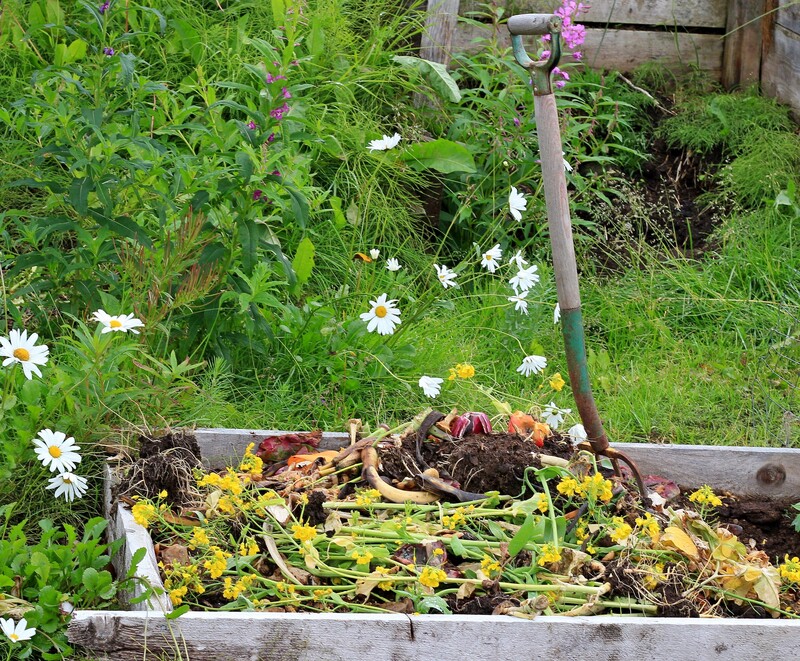Effortless Green Living at Home
Posted on 07/05/2025
In an era marked by escalating environmental concerns, the quest for sustainable living has never been more pertinent. Effortless green living at home not only reduces our carbon footprint but also fosters a healthier living environment. This article delves into practical, stress-free ways to achieve a sustainable, eco-friendly lifestyle within the comfort of your home.
Understanding Green Living
Green living encompasses a range of practices aimed at reducing our environmental impact through sustainable choices. Whether it's conserving energy, minimizing waste, or opting for eco-friendly products, the overarching goal is to live in harmony with the planet. It's about making mindful decisions that collectively contribute to a healthier environment. Importantly, green living doesn't have to be difficult or complicated; small, consistent changes can make a significant difference.

Energy Efficiency
One of the simplest and most effective ways to adopt green living at home is through energy efficiency. Here are some effortless ways to save energy:
- Switch to LED Bulbs: LED bulbs consume up to 80% less energy than traditional incandescent bulbs and last significantly longer.
- Unplug Devices: Electronics and appliances draw power even when turned off. Unplugging devices or using power strips can help minimize this "phantom" energy consumption.
- Install a Programmable Thermostat: These devices automatically adjust the temperature based on your schedule, ensuring efficient energy use.
- Opt for Energy-Efficient Appliances: Look for the Energy Star label when purchasing new appliances to ensure they meet energy efficiency standards.
Water Conservation
Water is a precious resource, and conserving it is a crucial aspect of green living. Here are some simple tips to reduce water usage at home:
- Fix Leaks: A dripping faucet can waste a significant amount of water over time. Regularly check for and fix leaks to conserve water.
- Install Low-Flow Fixtures: Low-flow showerheads and faucets significantly reduce water usage without compromising performance.
- Use a Rain Barrel: Collecting rainwater for gardening and outdoor cleaning can reduce your reliance on municipal water.
- Water-Efficient Landscaping: Opt for drought-resistant plants and efficient irrigation systems to minimize water use in your garden.
Waste Reduction
Reducing waste not only lessens the burden on landfills but also conserves resources and energy. Here are some effortless waste reduction strategies:
- Recycle Properly: Familiarize yourself with local recycling guidelines to ensure you're recycling correctly.
- Compost: Composting organic waste reduces landfill waste and creates nutrient-rich soil for your garden.
- Opt for Reusable Products: Replace single-use items with reusable alternatives, such as shopping bags, water bottles, and food containers.
- Buy in Bulk: Purchasing in bulk reduces packaging waste and often saves money.
Sustainable Home Practices
Adopting sustainable practices at home doesn't have to be daunting. Here are some easy-to-implement ideas:
- Use Eco-Friendly Cleaning Products: Many conventional cleaning products contain harmful chemicals. Switch to eco-friendly, biodegradable cleaning solutions.
- Grow Your Own Food: Even a small herb garden can reduce your reliance on store-bought produce and lower your carbon footprint.
- Support Sustainable Brands: Choose products from companies committed to sustainability and ethical practices.
- Reduce Meat Consumption: Livestock farming is a significant source of greenhouse gases. Opt for plant-based meals a few times a week to reduce your environmental impact.
Indoor Air Quality
Maintaining good indoor air quality is vital for both your health and the environment. Here's how to keep your indoor air clean:
- Ventilate: Regularly open windows to allow fresh air to circulate and reduce indoor pollutants.
- Houseplants: Certain houseplants, like spider plants and peace lilies, can help purify the air by absorbing toxins.
- Avoid Synthetic Fragrances: Many air fresheners and candles release harmful chemicals. Opt for natural alternatives like essential oils.
- Use a HEPA Filter: A high-efficiency particulate air (HEPA) filter in your vacuum and air purifier can trap fine particles and allergens.

Green Transportation
Your transportation choices also play a significant role in green living. Here are some tips to reduce your transportation footprint:
- Use Public Transit: Whenever possible, use buses, trains, and other forms of public transit to reduce individual carbon emissions.
- Carpool: Sharing rides with others reduces the number of vehicles on the road, lowering emissions.
- Bike or Walk: For short distances, consider biking or walking instead of driving.
- Electric Vehicles: If you need to drive, consider an electric or hybrid vehicle, which produces fewer emissions than traditional cars.
Adopting these practices not only contributes to greener living but also promotes a healthier lifestyle. As more individuals embrace sustainable habits, the collective impact can lead to significant environmental benefits.
Conclusion
Effortless green living at home is about making sustainable choices that are easy to implement and maintain. By focusing on energy efficiency, water conservation, waste reduction, sustainable home practices, indoor air quality, and green transportation, you can significantly reduce your environmental impact. Every small step counts, and together, we can move towards a more sustainable future.
Remember, the journey towards green living is a continuous process. Start with a few changes, and gradually incorporate more sustainable practices into your daily life. The planet will thank you, and you'll enjoy a healthier, more eco-friendly home.




 020 3743 9508
020 3743 9508


